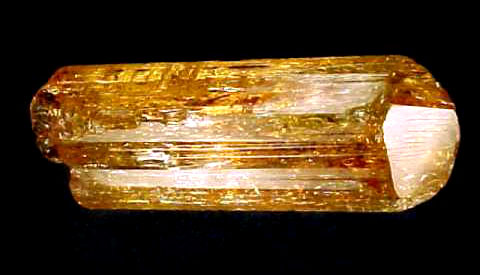
TOPAZ
Topaz is the name for the mineral species that is number 8 on Mohs’ scale of hardness. There is some uncertainty regarding the name. Some say it comes from the Sanskrit word meaning “fire.” Others link it to the Red Sea Island of Topazios (Zabargad or St. John’s Island), where peridot has been found.
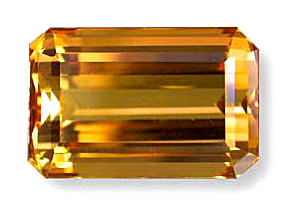
Ancient Egyptians thought the stone was colored by the mighty sun god Ra and was worn as an amulet against harm. During the Middle Ages, engraved topaz was used by clergy and royalty to promote goodwill. Topaz is the official gemstone of Texas and Utah and blue topaz is the gemstone of the 4th anniversary of marriage.
For the general public, topaz means a yellow gem, and much citrine and smoky quartz has been sold as “golden topaz” and “smoky topaz.” The terms “imperial” and “precious” topaz are often used to distinguish between true topaz and the quartz look-alikes.
The name “imperial topaz” is said to have originated in the 19th century in Russia, where the Ural Mountain mines were an important source. According to some sources, pink topaz from those mines was restricted to the family of the Czar. Today, the gem trade generally uses the term for pink, orange and red topaz, which comes mainly from Ouro Prêto, Brazil. Fine pink topaz also comes from the Katlang area of Pakistan.
Color
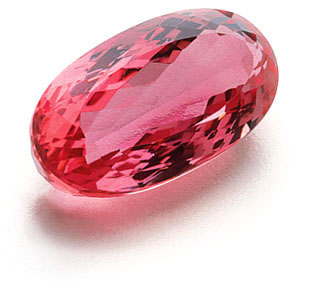
Topaz commonly occurs in colorless and brown colors, it is the rare golden, orange, pink, red and purple colors, which are often termed “precious” or “imperial” topaz, that are the m
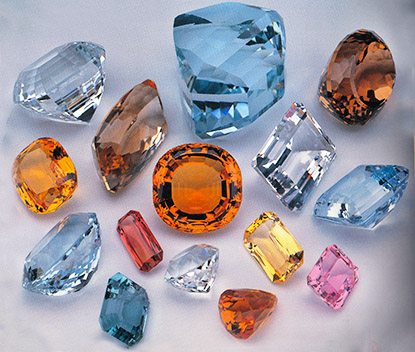
ainstay of the fine gem market. While blue topaz is found in nature, most of the material is produced by a combination irradiation/heating treatment.
Yellow and brown topaz owe their color to color centers. The impurity chromium produces pink to red colors. A combination of color centers and chromium produces orange topaz. Blue topaz is colored by color centers.
Note that the color of some brown topaz may fade with time.
Lighting
Due to its orange to red-orange color, topaz generally looks best under incandescent light. In contrast, blue topaz looks best under daylight or fluorescent light. When buying any gem, it is always a good idea to examine it under a variety of light sources, to eliminate future surprises.
Clarity
Topaz from most sources is reasonably clean. Thus eye-clean stones are both desirable and possible. The exception is with pink and red topaz, where only small stones are normally available. In those colors, a slightly higher degree of inclusions are tolerated.
Cut
Due to the shape of the rough (elongated prisms), topaz is generally cut as elongated stones, typically emerald cuts, elongated ovals, cushions and pears. To save weight, pears in particular are often cut with overly narrow shoulders. Due to the huge production, blue topaz is cut in virtually any shape and style o
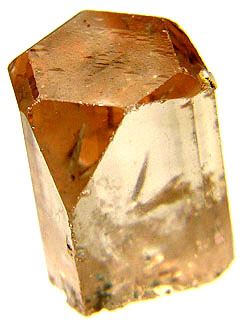
ne can imagine. Cabochon-cut topazes are rarely seen.
While topaz does have a perfect basal cleavage, it is not an easy cleavage, and so does not present too much difficulty to the cutter. Nevertheless, cutters will often try to ensure that no facet is parallel to the cleavage direction and jewelers try to mount valuable stones in settings that protect the stone.
Basal Cleavage
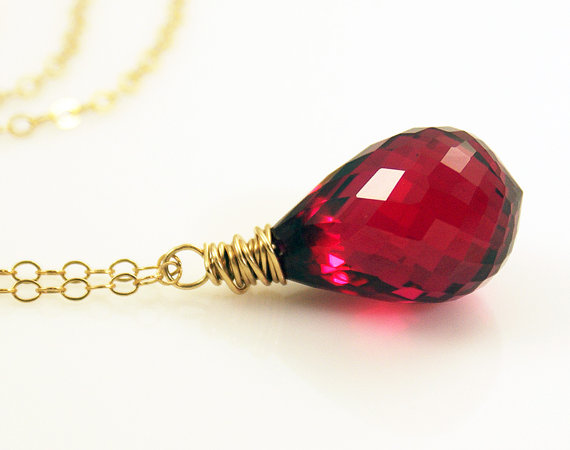
Prices
The prices of topaz are, like any gem, dependent on quality. Still, a few generalizations can be made. Blue topaz, the most common variety seen in jewelry today, has been produced in such quantities that today it is generally available for $25/ct. at retail for ring sizes. Larger sizes may be slightly more. While natural blue topazes are known, the huge production of treated blue topaz has essentially dropped the price of the natural blue down to that of the treated stone.
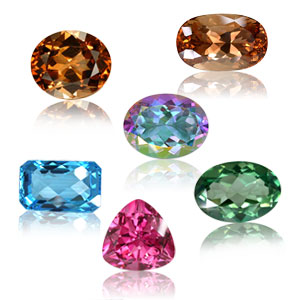
Colorless topaz, from which blue topaz is produced (via irradiation and heat), is available in sizes up to 100 cts. and greater, and sells for less than $8/ct. Brown topaz fetches similar prices.
In contrast, precious topaz (a.k.a. ‘imperial’ topaz) in rich orange colors fetches prices in excess of $1000/ct. for large (10 ct. +) sizes. The most valuable topaz is a rich pink or red color, and can reach $3500/ct. at retail. These are rare in sizes above 5 cts.
Stone Sizes
Topaz sometimes occurs in enormous sizes, where clean gems of even 1000 cts. are known. Indeed, faceted stones of tens of thousands of carats have been produced from some monster crystals. However, cut stones of the prized “imperial” colors (orange, pink and red) are more rare. Fine pinks and reds above 5 cts. are scarce. Fine oranges above 20 cts. are also rare.
Sources
Gem topaz has been found at a number of localities around the world, including Brazil, Nigeria, Sri Lanka, Russia, Burma, Pakistan, USA and Mexico. The premier source is near Ouro Prêto in Brazil’s Minas Gerais state.
Enhancements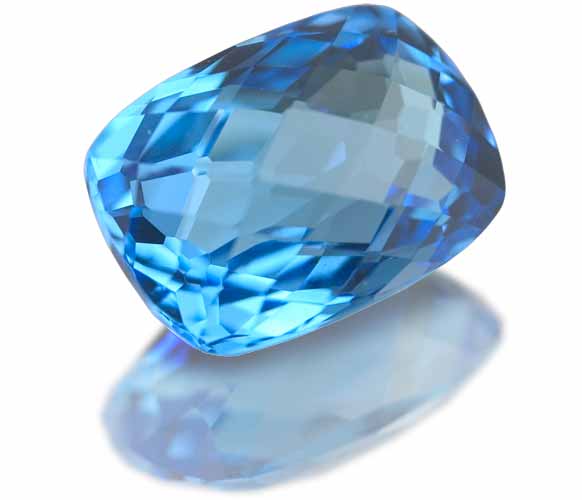
As previously mentioned, several varieties of topaz are typically enhanced. Most common is the combination irradiation/heat treatment that produces blue topaz. For this treatment, colorless topaz is irradiated, turning it brown. The stone is then heat treated, which turns it blue. While the brown color is generally unstable, fading with prolonged exposure to sunlight, the blue color is generally stable under normal wearing conditions.
There are three main flavors. The first, a “sky” blue, is produced by gamma rays (cobalt 60). Deeper “Swiss (a.k.a. ‘windex’) ” and “London” blues are produced by high-energy electrons (cyclotron) or nuclear radiation. In the latter case, the stones must be allowed to cool down to safe levels of radioactivity before being sold. This typically takes a few months to as much as two years.
Another treatment seen on occasion with topaz is bulk diffusion, where stones are heated for long periods surrounded by cobalt. This drives the cobalt into a thin layer at the surface, turning it green to blue. The layer is extremely thin.
Finally, some topaz is coated with metallic oxides, similar to the coatings on camera lenses. This produces various colors and rainbow-like reflections, but the coatings are easily scratched. The material has been marketed under the name “rainbow” topaz.
When heated, yellow topaz often becomes reddish-pink. The colour change upon heating was first discovered by a Parisian jeweller around 1750. In particular the yellow Topaz of Brazil has been known to be treated frequently. Only stones of a brown-yellow colour yield the pink; the pale yellow ones usually turn white. The pink colour is stable. Topaz can also be irradiated, turning the stone blue, ranging from a light pure colour to very dark almost electric blue. A recent trend in jewellery is the manufacture of topaz specimens that display iridescent colours, by applying a thin layer of titanium oxide via physical vapour deposition, this stone is then sold as ‘mystic topaz’. I do not consider this as an enhancement more like damage to a natural material and would not sell it.
Imitations
Topaz has never been synthesized, but a number of imitations exist, including natural stones such as citrine and smoky quartz, and man-made imitations such as glass.
Properties of Topaz

